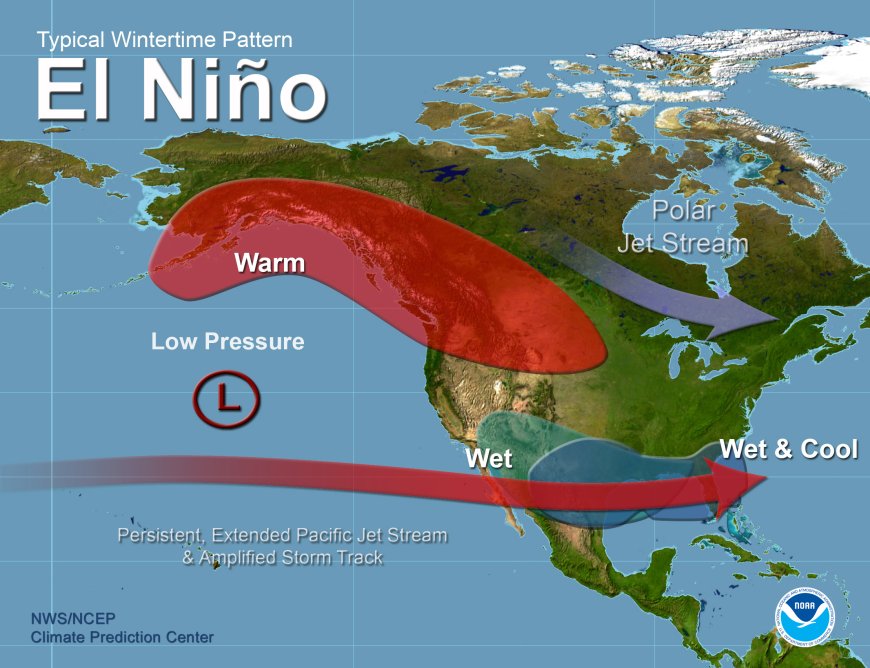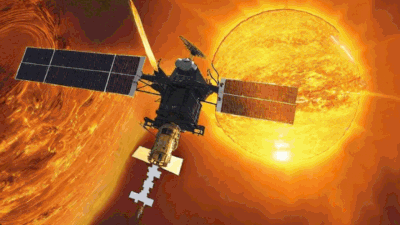2023–24 El Niño: Among the Strongest Ever Recorded

The World Meteorological Organization (WMO) announced on July 4, 2023, the beginning of the El Niño event for 2023–2024. The planet's various territories will determine the characteristics of the most significant meteorological effects, expected to range from November 2023 to April 2024. These effects include droughts, heavy rains, wildfires, heat waves, tropical cyclones, flooding, and changes in wind patterns. These occurrences have adversely impacted the economic activities of agriculture and fishery; food shortages and price increases, particularly rice, palm oil, sugar cane, soybeans, and corn, have resulted in food insecurity among the most vulnerable communities.
The Phenomenon:
The extraordinary warming of surface waters in the eastern Pacific Ocean is known as El Niño, which translates to ‘little boy’ in Spanish. Climate events, such as El Niño, are longer-term environmental conditions that persist for months or even years, unlike short-term weather occurrences. El Niño is the ‘warm phase’ of a broader phenomenon known as the El Niño Southern Oscillation (ENSO). The Southern Oscillation causes abnormally warm waters to develop between the International Date Line and the coast of South America due to global warming of the eastern equatorial Pacific Ocean. The Earth's climate varies most dramatically yearly due to El Niño. This occurrence significantly impacts the planet's average surface temperature. The temperature can rise by several tenths of degrees Celsius during a significant El Niño episode.
The thinning of the trade winds is the first sign of an El Niño pattern. Weakening trade winds cause wind and air pressure variations, which drive warm water toward South America's west coast. The eastern Pacific has a decrease in surface atmospheric pressure due to rising motion caused by the warmer water. These tropic alterations enable the Pacific Jet Stream, a slender air stream moving east to west, to be forced southward and extend farther eastward at higher latitudes. The weather patterns observed over a vast geographic area are determined by the jet stream, which directs weather systems. Regardless, the global complexity of ocean-atmosphere interactions makes it challenging to pinpoint the exact origins of ENSO.
The Quantification:
According to the Oceanic Niño Index, accurate measurements of the water temperatures in the east-central equatorial Pacific Ocean are used to categorize El Niño and La Niña (known as ‘little girl’, is the ‘cool phase’ alternative, indicated by exceptional cooling in the eastern Pacific Ocean). El Niño episodes transpire when five consecutive overlapping three-month periods experience temperature increases of at least 0.5 degrees Celsius. The National Oceanic and Atmospheric Administration (NOAA) buoys, which are positioned in roughly 70 places, are the ones that take these temperature readings. El Niño occurrences can also be predicted using sea surface height data from NASA satellite observations (heated water expands to fill more volume; therefore, rising ocean height corresponds with rising temperatures). Scientists then use the Oceanic Niño Index to calculate departures from the average sea surface temperature. The ‘stronger’ the El Niño, the greater the temperature fluctuations.
Current Circumstances:
Recent announcements from the World Meteorological Organization (WMO) indicate that the El Niño of 2023–24 has created one of the five most excellent on record. El Niño is predicted to continue affecting the global climate in the upcoming months despite a declining trend. In addition, the UN agency forecasted above-average temperatures for practically the whole geographical region between March and May.
In 2023, the global mean temperature surpassed 1.5 degrees Celsius for the entire year for the first time since January, according to the European Union's Copernicus Climate Change Service. 2023 was the warmest year on record due to the global extreme weather events and record temperatures caused by the prevailing El Niño conditions. It is crucial to remember that the Paris Agreement's definition of a permanent violation of the 1.5-degree Celsius limit relates to long-term warming over several years.
Later in 2024, there's also a chance of La Niña emerging, although the probabilities remain uncertain. According to scientists actively monitoring the situation in India, better monsoon rainfall this year, compared to 2023, could result from La Niña conditions setting in by June or August.
Impact of Climate Change on El Niño:
According to a recent study, El Niño occurrences have become more common and robust due to global warming brought on by climate change. A climate scientist has predicted that by the end of the twenty-first century, the frequency of extreme El Niño and La Niña occurrences may rise from one in every twenty years to one in every ten years. El Niño and La Niña occurrences, in the meantime, have the potential to amplify the effects of climate change. For example, during the El Niño of 2015–16, there was excessive coral bleaching. But in the upcoming years, the precise repercussions will become apparent.
Ultimately, El Niño plays a significant role in controlling Earth's climate. Even while there is still much to learn about this potent worldwide phenomenon, the information accumulated will help make plans for the expected weather patterns this year.











































